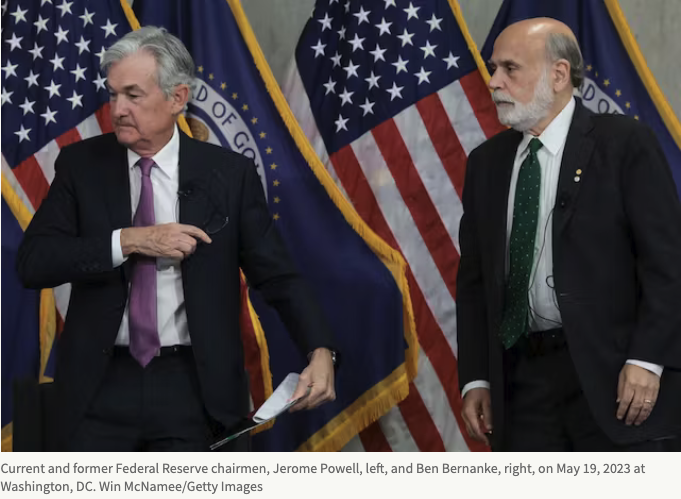Quantitative Easing: The Tab On American Taxpayers
It looks like someone will be on the hook for a shortfall of $1.6 trillion, and I bet you can’t guess who that will be.

After the binge comes the tab: $1.6 trillion. That’s the hit American taxpayers face as a result of the Fed’s financial manipulations, in which the central bank racked up some $9 trillion in assets under the guise of “Quantitative Easing.”
The idea was to stimulate the economy, buying long-term bonds to push down interest rates. Now that interest rates have jumped, though, the Fed is paying more for deposits in its vaults than it’s earning from its portfolio.
In its Quantitative Easing spree, the central bank “took on a tremendous amount of interest rate risk,” an economist at the Bank Policy Institute, William “Bill” Nelson, warns.
That’s because the Fed “purchased longer-term Treasury securities,” along with mortgage-backed securities, he writes. All of it, he adds, was “financed with short-term borrowing.” Now, the Fed is operating at a loss, and taxpayers will feel the pain.
Over 16 years, Mr. Nelson reports — between the fourth quarters of 2023 and 2039 — the Fed’s “net interest income,” the money the central bank sends back to the Treasury, “will be about $1.6 trillion lower than if its balance sheet consisted solely of Treasury bills.” In short, if the Fed hadn’t been playing the markets to push down interest rates, it wouldn’t find itself saddled with a 13-figure albatross of red ink.
Some $1 trillion of this taxpayer cost, Mr. Nelson writes, “is a direct result” of the fourth round of the Fed’s Quantitative Easing, “from May 2020 onwards.” That wave of asset buying brought the Fed’s balance sheet to nearly $9 trillion from just over $4 trillion before Covid. In this fourth round, the idea was to “remove duration risk from the market,” Mr. Nelson notes. Yet, he adds, the risk “does not disappear, of course, it is taken on by the Fed.”
Despite the inevitable losses that ensued from this strategy, Mr. Nelson is not among those Fed critics who have raised concerns over the bank’s solvency, or whether the red ink “will prevent the Fed from conducting monetary policy.” In Mr. Nelson’s view, though, the “question is whether the Fed understood and considered the risk it was taking.” He also asks whether the Fed adequately consulted the Congress on these matters.
After all, Mr. Nelson writes, the Fed “continued its purchases” of assets even after the acute danger point of the Covid pandemic, “the Treasury market meltdown in March and April 2020,” was safely in the rear-view mirror. Had the Fed, Mr. Nelson asks, “discussed the risks with Congress, and concluded that the reward in terms of increased economic activity and higher inflation was worth the risk”? The economist leaves this as a rhetorical question.
It’s understandable why. The central bank is famously allergic to even the faintest whiff of oversight from the people’s elected representatives. It is solely to Congress that the Constitution assigns the government’s monetary powers, including borrowing on Uncle Sam’s credit. Yet the ex-Fed chairman, and Nobel laureate, Ben Bernanke, frets that “Fed losses on its balance sheet” might “draw political attention” or prompt “criticism from legislators.”
The scale of the red ink that has overtaken the Fed, though, might make even Mr. Bernanke squirm. The losses, ultimately borne by the taxpayers, are ripe for scrutiny by the green eyeshades on Capitol Hill. This is especially true in light of the recent turmoil that struck the banking industry. Even the Times noticed that it was “a bad balance sheet” that “killed Silicon Valley Bank,” as Peter Coy reported. He saw, too, that the Fed “has a similar balance sheet.”
An ex-Treasury official, Alex Pollock, a Sun contributor, is even less sanguine, contending that the Fed’s balance sheet “looks just like a Savings & Loan in 1980.” These columns have noted that this is all a symptom of the age of fiat money. A gold standard imposes a discipline on governments — and central banks — and limits their ability to get into monetary mischief. With the taxpayers facing a $1.6 trillion tab, honest money is looking better all the time.